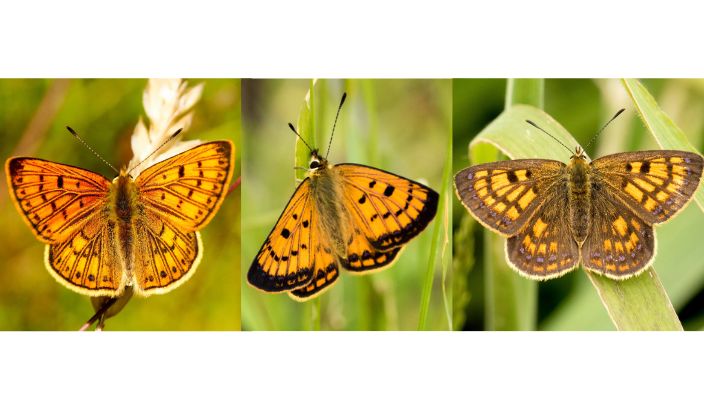Eyes on butterflies


While they all look similar, help is needed in researching the country’s copper butterfly species to properly categorise them. Photos: Angela Moon-Jones.
Moths and Butterflies of New Zealand Trust are hoping to accurately document the country’s native copper butterfly populations by using citizen science and photography.
The Moths and Butterflies of NZ Trust has received a $5000 Canon grant for the Butterfly Discovery Project to investigate long-standing speculation about how many native Lycaena butterfly species there are.
Trust secretary and “Butterfly Lady” Jacqui Knight says that without knowing about the populations and their spread, copper butterflies are less protected.
“These butterflies are unique to New Zealand and are at a distinct disadvantage as not that many people know they exist, so are more likely to be under threat as people aren’t doing anything to protect them if we don’t know locations and numbers”, she says.
“They are found all over the country really, from stony river valleys like the Wairau to mountain tops all the way up in the Nelson Lakes, but are always close to their host plants Muehlenbeckia, found in the wild but also often used as a landscaping plant.
“But if people are using pesticides, destroying habitat, even off-road driving, the need to have them properly identified is even more critical so we can protect their vulnerable areas.”
While only four species of copper butterflies, Lycaena, have been officially identified, scientists have theorised for more than 45 years that additional species exist in Aotearoa’s isolated regions.
The Trust, will use photography to document suspected new species during expeditions to remote mountains and beaches, addressing a significant gap in the understanding of New Zealand’s endemic butterfly species.

